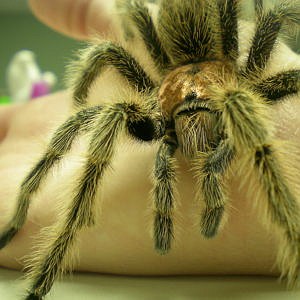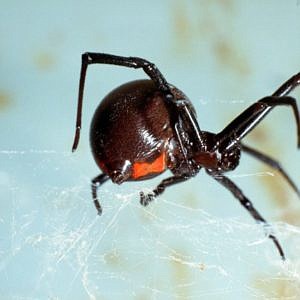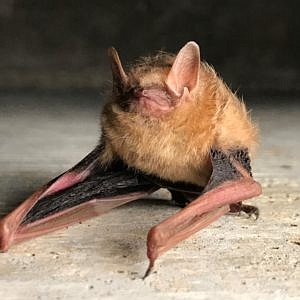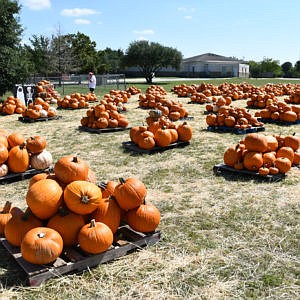The Lone Star State has spiders, bats and pumpkins
Style Magazine Newswire | 10/15/2019, 5:49 p.m.
From bats and spiders to pumpkins, the Lone Star State is home to some of the most iconic symbols of Halloween. Here are some interesting facts about some of these seemingly spooky Texas residents, as provided by Texas A&M AgriLife experts:
Tarantulas — More hairy than scary
Tarantulas are actually very docile. (Texas A&M AgriLife Extension Service photo)
Molly Keck, an entomologist at the Texas A&M AgriLife Extension Service office in Bexar County and long-time tarantula enthusiast, said while tarantulas are large and eerie looking, they are actually very docile and rarely bite.
“The exceptions are when they paralyze their prey to eat it — or they may bite if threatened,” she said. “But though their venom can paralyze an insect or very small animal, it rarely causes a severe reaction in humans.”
Keck said when in danger some species of tarantula can rapidly dislodge prickly hairs from the top of their abdomen with their hind legs, and these hairs irritate the eyes or skin of the attacker.
“But tarantulas, like most spiders, are beneficial predators that feed on other insects,” she said. “Some species even make good pets. But native species, like the Texas tan, are short-lived in captivity. Generally, however, tarantulas are low-maintenance and make good starter pets.”
Black widows — They’re not [really] that bad
Texas is also home to another arachnid often associated with Halloween– the black widow spider.
“This spider is most commonly identified by the red hourglass-shaped mark on its underside,” said Wizzie Brown, AgriLife Extension entomologist, Travis County. “But even though its venom is highly virulent, the spider itself is very timid. Even if disturbed while it’s in its web, it tries to escape rather than attack.”
Black widows are known for the distinctive hourglass shape on their undersides. (Texas A&M AgriLife Extension Service photo)
She said Texas has southern black widows, northern black widows, western black widows, and brown widows, but the brown widows are not native to the state.
Black widows can be found year-round in buildings and sheltered areas such as sheds, garages, attics and crawl spaces, she said.
“Contrary to popular belief, female black widows do not usually eat males unless they are kept together in confined spaces where the male cannot escape,” Brown said.
However, she noted, their scary reputation is at least partly deserved because the venom from the black widow is a neurotoxin that can cause anything from elevated temperature, nausea and sweating to a painful cramping and constriction of the abdominal muscles and the chest, and even death.
“Death from a black widow bite occurs very rarely, and it is more likely to happen if the person bitten is either very young or elderly,” she said. But no matter your age, it’s important to seek medical attention if bitten by a black widow.”
Daddy longlegs — Just don’t call me ‘spidey’
Daddy longlegs are not spiders, but arachnids more closely related to scorpions. They belong to a unique order called Opiliones, or harvestmen.
“While both daddy longlegs and spiders have eight legs, they are easy to tell apart,” said Mike Merchant, Ph.D., AgriLife extension entomologist, Dallas. “Spiders have a two-part body, while daddy long-legs have a single, fused body. And unlike spiders, daddy longlegs do not make silk and can’t spin webs.”
Merchant said contrary to urban legend, daddy longlegs are not dangerous to people because they lack venom glands.
“Harvestmen can be found on every continent except Antarctica and can be found throughout Texas, from the piney woods in the east to the deserts of the western parts of the state,” he said. “They live for about one year and feed on invertebrates and dead plant material.”
A group of daddy longlegs on a karst feature. The daddy longlegs, however, is usually a solitary creature. (Texas A&M AgriLife Extension Service photo)
Merchant said they are called harvestmen because they are typically seen around harvest time in the late summer and fall.
“They are also called ‘shepherd spiders’ due to the males guarding the females as they lay their eggs,” he noted.
Daddy longlegs are primarily night prowlers and are usually solitary, but at times a large group will amass and form a wicked-looking dark cluster that resembles a beard. However, their most compelling feature is their legs.
“While most harvestmen species have very long legs, there are some short-legged species that closely resemble mites,” Merchant said. “Daddy longlegs have eight long legs — from one to two inches in length — extending from the body. If humans had a similarly proportioned torso, our legs would extend to a span of some 40 to 50 feet.”
He said the legs are very delicate and also serve as a means of protection.
“When a predator takes hold of a leg, it can easily detach and then continues to twitch, which both confuses the predator and gives the daddy longlegs an opportunity to escape,” he said.
Another way they protect themselves is by using their scent glands, which produce a foul-smelling fluid that helps ward off the predator.
“Alone or in clusters, daddy longlegs can look strange or even ominous, but they are completely harmless,” he said.
FACTOID: In frontier days, it was believed daddy longlegs could find lost cattle. If one was picked up by seven of its eight legs, the remaining leg would point in the direction of the missing livestock.
The bats at night… not such a fright… deep in the heart of Texas
Texas also boasts one of the most diverse populations in the U.S. of another well-known Halloween symbol – the bat.
There are 33 permanent or migratory bat species in Texas, the most prevalent of these being the Mexican free-tail, said Samantha Leiver, Ph.D., research associate with Texas A&M AgriLife Research at the Texas A&M Natural Resources Institute in College Station.
The tricolor bat, shown here, is one of the most prevalent bats in Texas, but millions of them throughout North America have died from a fungal disease known as white-nose syndrome.
(Texas A&M Natural Resources Institute photo by Rick Clawson)
“The freetail has a huge range throughout North and South America,” she said. “In fact, some years back we had a few hundred thousand of them take up residence in our stadium here at Texas A&M. Some of the other bats that call Texas home are Eastern red bat and tricolored bat, though we are seeing fewer tricolored bats due to white-nose syndrome.”
She said the largest biodiversity of bats is in Central Texas, but a few of the more rare or exotic bat species can sometimes be found along the Texas-Mexico border.
“Vampire bats are seen on rare occasion in the lower Rio Grande Valley, but mainly reside in South America and take the blood from livestock, not humans,” Leiver said. “Texas does, however, have a reddish-brown bat called the ghost-faced bat because of the many folds of skin on its face. It looks pretty scary and has a scary name, but it’s basically harmless.”
She also noted Texas has pollinator bats, including the Mexican long-nosed bat found in far West Texas, which feeds on agave plants.
“So in addition to bats being good for the environment by providing pest control by eating massive amounts of pesky insects, these particular bats also benefit the tequila industry,” she said.
Leiver said a bat can eat half its body weight in insects each evening and night, and freetail bats alone provide at least $750,000 in value to Texas agriculture, primarily in insect control.
“Nationally, bats provide at least $3 billion or more annually in agricultural value,” she said. “They will leave you alone and prefer to be left alone, but never touch a bat as it may have rabies.”
Pumpkin Ties
About 90% of all commercially grown pumpkins in Texas are produced in Yoakum and Floyd counties. (Texas A&M AgriLife Extension Service photo)
The pumpkin is another Halloween symbol associated with Texas.
“In 2018, Texas was the fifth-largest commercial pumpkin producer among states in the U.S.,” said Dr. Juan Anciso, AgriLife Extension vegetable specialist. “This resulted in a $24 million economic impact to the state.”
Anciso said about 5,400 acres of pumpkins were planted in Texas last year, with the vast majority of these being grown in two West Texas counties.
“The pumpkin is a cucurbit, which is a family of plants that includes melons, squashes and cucumbers,” Anciso explained. “More than 90% of the pumpkins produced statewide are used for seasonal ornamental purposes such as jack-o’-lanterns.”
-30-











